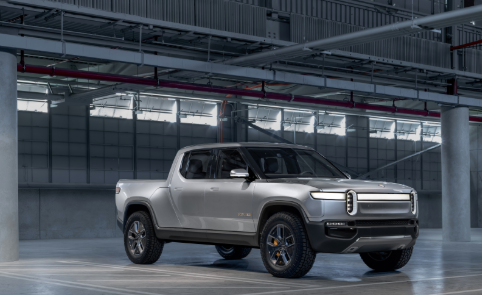
Is More Range Really Better for Electric Trucks?
Although range anxiety is dying down, when it comes to electric trucks, a big battery pack is still important. Especially when towing gets involved. However, not every manufacturer subscribes to the idea. Porsche’s Taycan, for example, can only do about 200 miles on a charge, Road & Track reported. And Mazda purposefully gave its upcoming EV SUV a relatively small battery. In the face of the Rivian R1T’s claimed 400-mile range and the Tesla Cybertruck’s supposed 500-mile range, decisions like that can seem foolish. But is increasing electric trucks’ range really the right strategy?
The downsides of increasing electric trucks’ range

Mazda specifically gave the MX-30 EV a 35.5-kWh battery pack because of emissions. Car and Driver reported that the automaker had run a life-cycle study that determined a pack that size would let the SUV produce lifetime emissions on-par with a diesel Mazda 3. Anything bigger would be ecologically harmful.

While it is true that electric vehicles, taken over a lifetime, can produce fewer emissions than ICE vehicles, making lithium-ion batteries is still a process that releases emissions. And if you want more range, you make a bigger pack, which means more emissions. But, as Popular Mechanics explained, these emissions are far less than some would have you believe.

However, the emissions aren’t the biggest problem. It’s time. Even the fastest-charging EV on the market, the Porsche Taycan, can take up to an hour to fully recharge. And its 93.4-kWh battery pack isn’t even the largest on the market.

The Tesla Model X has a 100-kWh pack, and Rivian’s R1T will offer an optional 180-kWh pack. Yes, just like with gas tanks, a bigger pack lets you go further. But it also takes longer to fill once it’s empty.
And when you do the math, a smaller battery pack may actually save you time.
Faster charging is better than more range for electric trucks

Let’s use the example of one of the most-efficient EVs available, the Tesla Model 3.
Forbes reports that the Standard model has a 50-kWh pack, and the Performance a 75-kWh pack. The Standard has an EPA-certified range of 250 miles, and the Performance a range of 310 miles. Now, let’s say both Model 3s have to cover 310 miles and finish the journey with a full battery. Battery recharge times aren’t exactly linear, as Battery University and Jalopnik explained, but roughly speaking, a 50-kWh pack is going to charge twice as fast as a 100-kWh one, according to the Rocky Mountain Institute.
Scaling both Model 3s’ charge times to the Porsche Taycan’s, and having both cars travel at 60 mph, the Standard Model 3 will finish the challenge about 10 minutes faster than the Performance one.
Meaning, to save time in your daily commute or family trip, it’s better to buy an EV with a smaller battery. Smaller battery packs would also cut down on material usage and cost. They could also potentially leave electric trucks lighter and more efficient.
What other critics and experts say
RideApart experienced this in a long-term review of the electric Zero SR/F motorcycle. The reviewer wished, instead of longer range, the bike could have a smaller battery but charge faster. Short, frequent stops would have been preferable to infrequent but long stops.
And it’s not only electric bike riders that run into this issue. In his discussion about the Porsche Taycan’s efficiency, Engineering Explained’s Jason Fenske touched on why customers are OK with a Mustang GT500 that can only do 224 miles on a tank, but not an electric Porsche. You can refuel the Mustang in about 5-10 minutes—the Porsche takes significantly longer.
That’s assuming you can find a compatible charger. Which is why manufacturers fit big batteries in the first place.
Why range is still important
The fastest chargers available today are Level 3 chargers, Roadshow explains, which can cut charge times from hours to minutes. For example, The Smoking Tire’s Matt Farah managed to find a 350-kW charger that charged his press Taycan from 5-80% in 22 minutes. But it’s not enough to find a charger—your vehicle has to be compatible with it.
For example, RideApart noted that the Zero SR/F’s onboard equipment could only accept charges from Level 1 or Level 2 chargers. And there are so many competing plug standards that it’s not always possible to find one that fits your vehicle. Roadshow also reported that some Level 3 charges may not even accept Tesla Model 3s because of software issues.

That’s why electric trucks are still sold and advertised with large range figures: because the US’ charging infrastructure is still so poor. Decreasing an electric truck’s range may speed things along, but only if there are enough chargers available. Quick-charging supercapacitors could help, but they’re not production-ready yet.
So, if you really want to help improve electric trucks, range alone isn’t going to cut it. Petition your local government to install more Level 3 chargers, and get back that recharge time for yourself.
Follow more updates from MotorBiscuit on our Facebook page.


